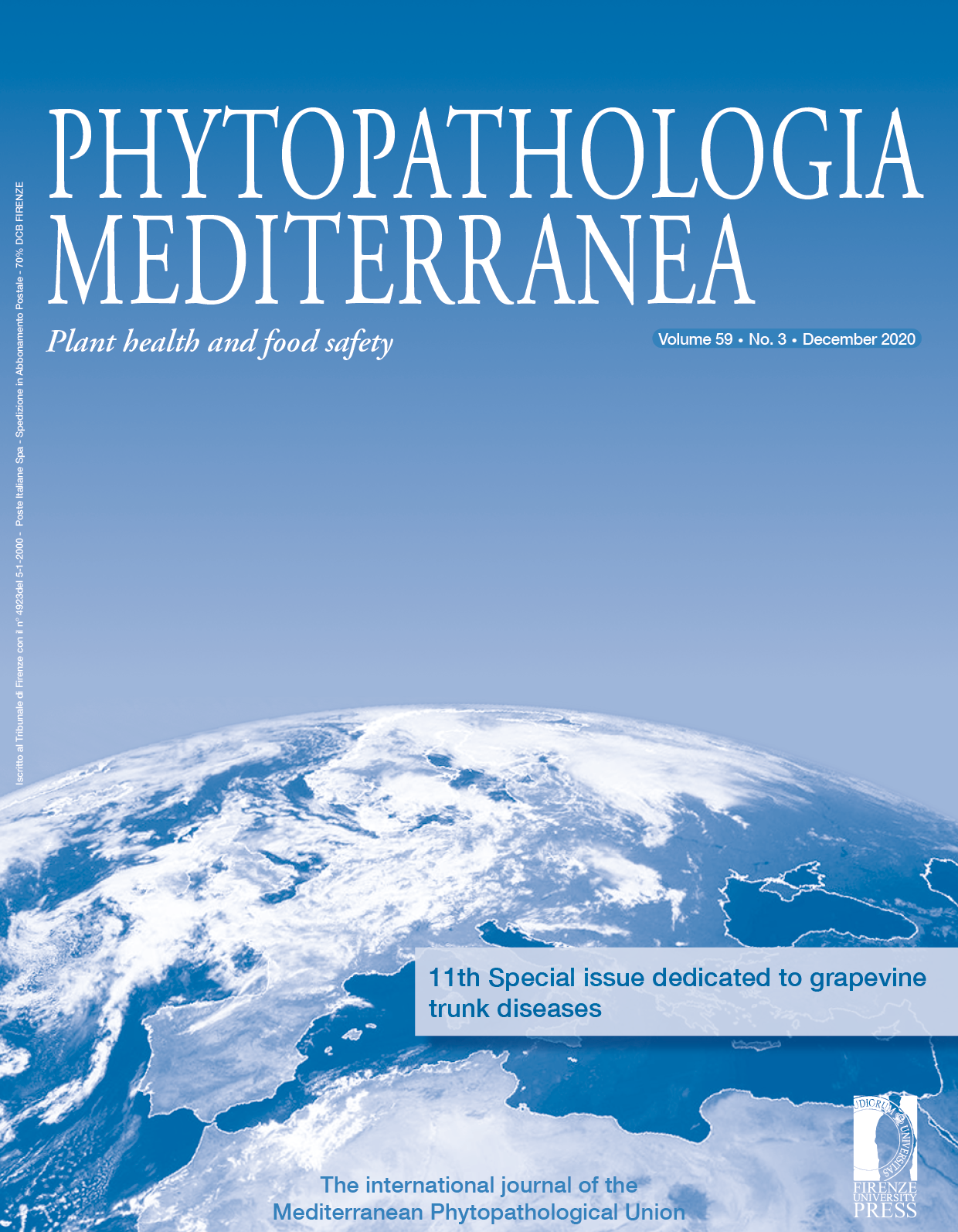Published 2020-10-10
Keywords
- Grapevine trunk diseases (GTDs),
- Botryosphaeria dieback,
- Botryosphaeriaceae,
- fungal melanin,
- tyrosine catabolism
How to Cite
Funding data
Abstract
Lasiodiplodia (Botryosphaeriaceae) includes fungi that are considered among the most aggressive to grapevine, capable of causing cankers and necrotic lesions which eventually lead to death of host plants. A common characteristic of this genus is the presence of melanin in conidia and mycelium. Melanin is produced by the oxidation of phenolic and/or indolic compounds. For some fungi, this pigment is an essential factor for pathogenicity. This study characterized the types and the roles of melanin produced by Lasiodiplodia gilanensis. Using specific melanin inhibitors, L. gilanensis was shown to synthesize DOPA-melanin, DHN-melanin, and pyomelanin. DOPA-melanin was shown to be involved in production of aerial mycelium and protection against enzymatic lysis and oxidative stress; DHN-melanin to be involved in ramification of mycelium when exposed to nutrient deficiency; and pyomelanin to be related with hyphae development. The fungus used tyrosine as a precursor of DOPA-melanin and as carbon and nitrogen sources, and produced melanin inside the piths of infected plants. Genes involved in melanin synthesis were conserved among the Botryosphaeriaceae, highlighting the importance of melanin in this family.







